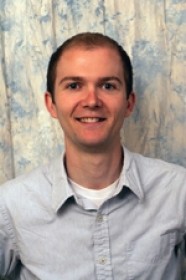
PhD Thesis Proposal
November

1:30 pm to 12:00 am
Event Location: GHC 8115
Abstract: Humanoid robots represent the state of the art in complex robot systems, but the design of controllers can be challenging and tedious. High performance controllers that can handle unknown perturbations will be required if complex robots are to one day interact safely with people in everyday environments. The high degree of freedom, dynamic and unstable nature make analyzing and predicting these types of full body behaviors difficult. In order to simplify the design of humanoid balance controllers, often reduced order models are used to approximate the dynamics. Controllers for these simple models are easier to design, but it is often unclear how to properly map these controls back to the full body robot. By studying such full-body control in humanoid robots, we also hope to better understand human perception and motor control. A better understanding of this low-level balance control will aid in the design of balance disability monitoring and diagnosis as well as corrective devices such as robotic prosthetics and orthotics.
This thesis details how simple models can be used to control full body push recovery in humanoid robots. First, analytic bounds on stability for various recovery strategies can be determined by considering worst-case scenarios and bang-bang type controllers. These bounds are helpful for deciding when to switch strategies online. Next, an optimal control framework is presented which can efficiently plan trajectories for balance and stepping over a receding horizon. This framework is a convenient method for generating motions that obey the constraints inherent to bipedal balance (e.g. the center of pressure must remain within the base of support). Finally, these simple models and associated optimal recovery trajectories are directly applied to the control of the full body. This control is achieved using new inverse dynamics techniques that attempt to reproduce the contact forces that result in a desired center of mass motion determined by the controller on the simple model. So far, this force-based controller has been applied to standing balance in simulation and on the hydraulic, torque-controller Sarcos humanoid robot. Simple step recovery has been demonstrated in simulation using the optimal control framework. The end result of this research will be robust full-body balance control that can be extended to a wide variety of tasks such as walking.
Committee:Christopher Atkeson, Chair
Jessica Hodgins
Hartmut Geyer
Jerry Pratt, Institute for Human and Machine Cognition